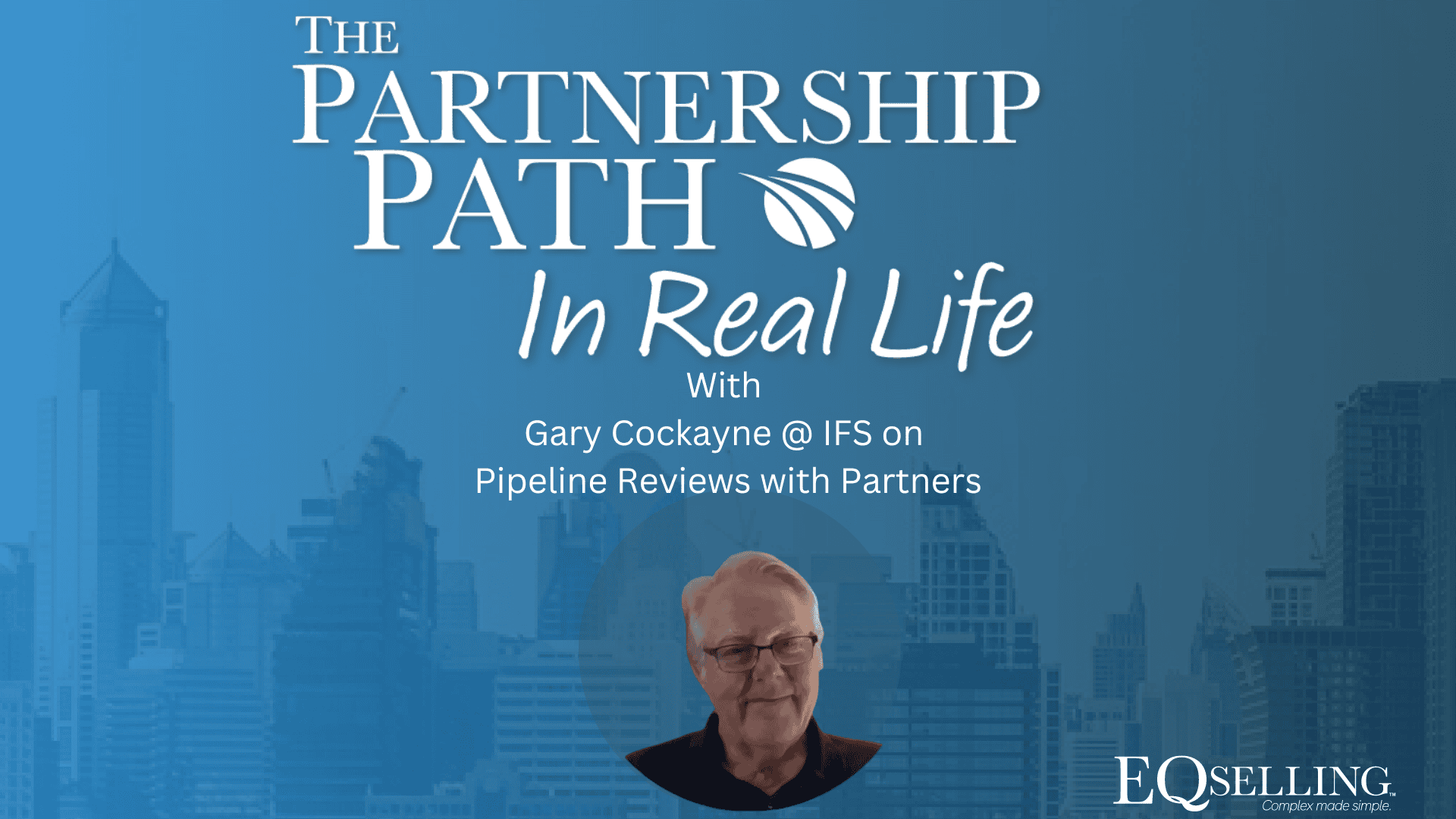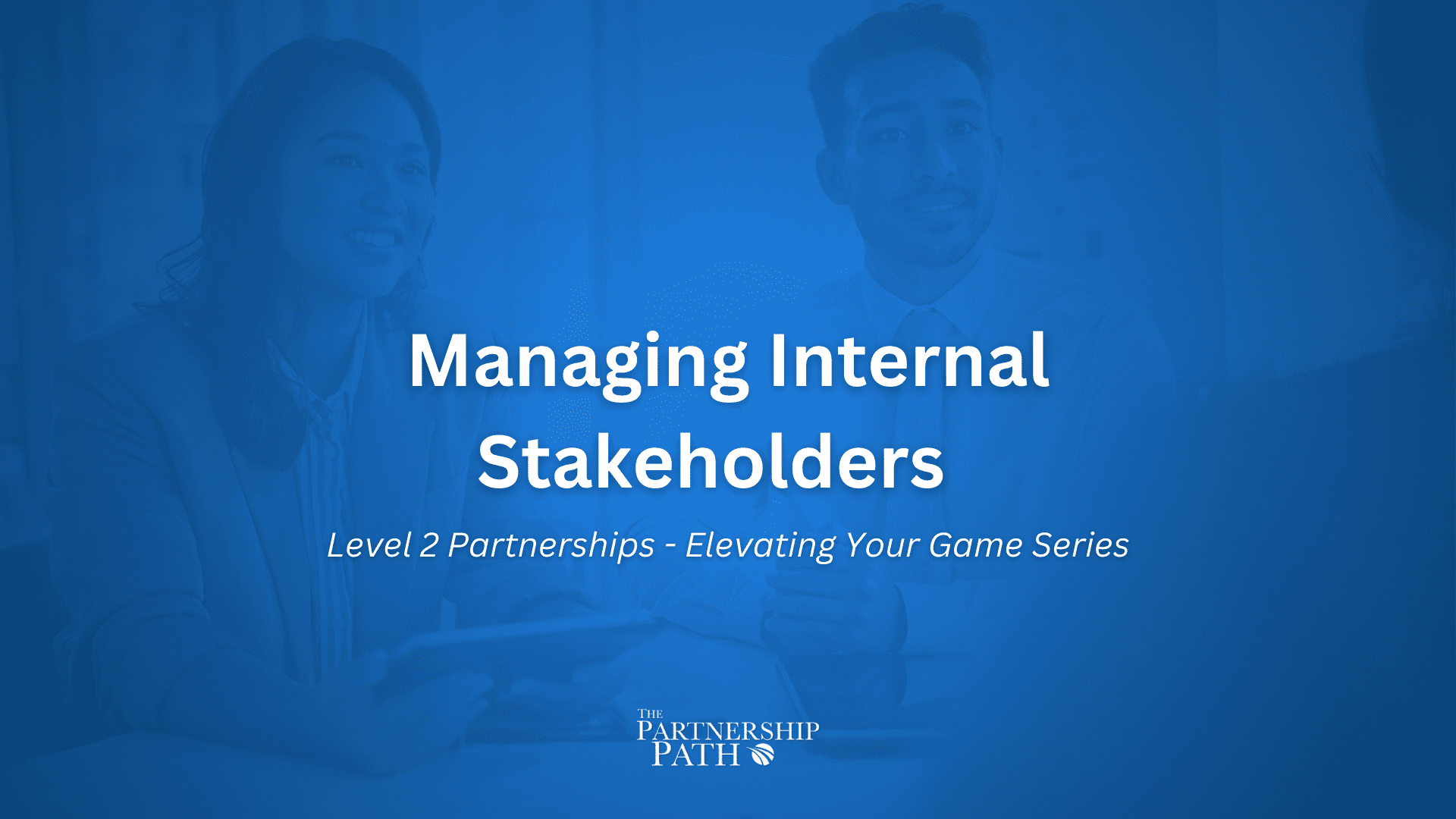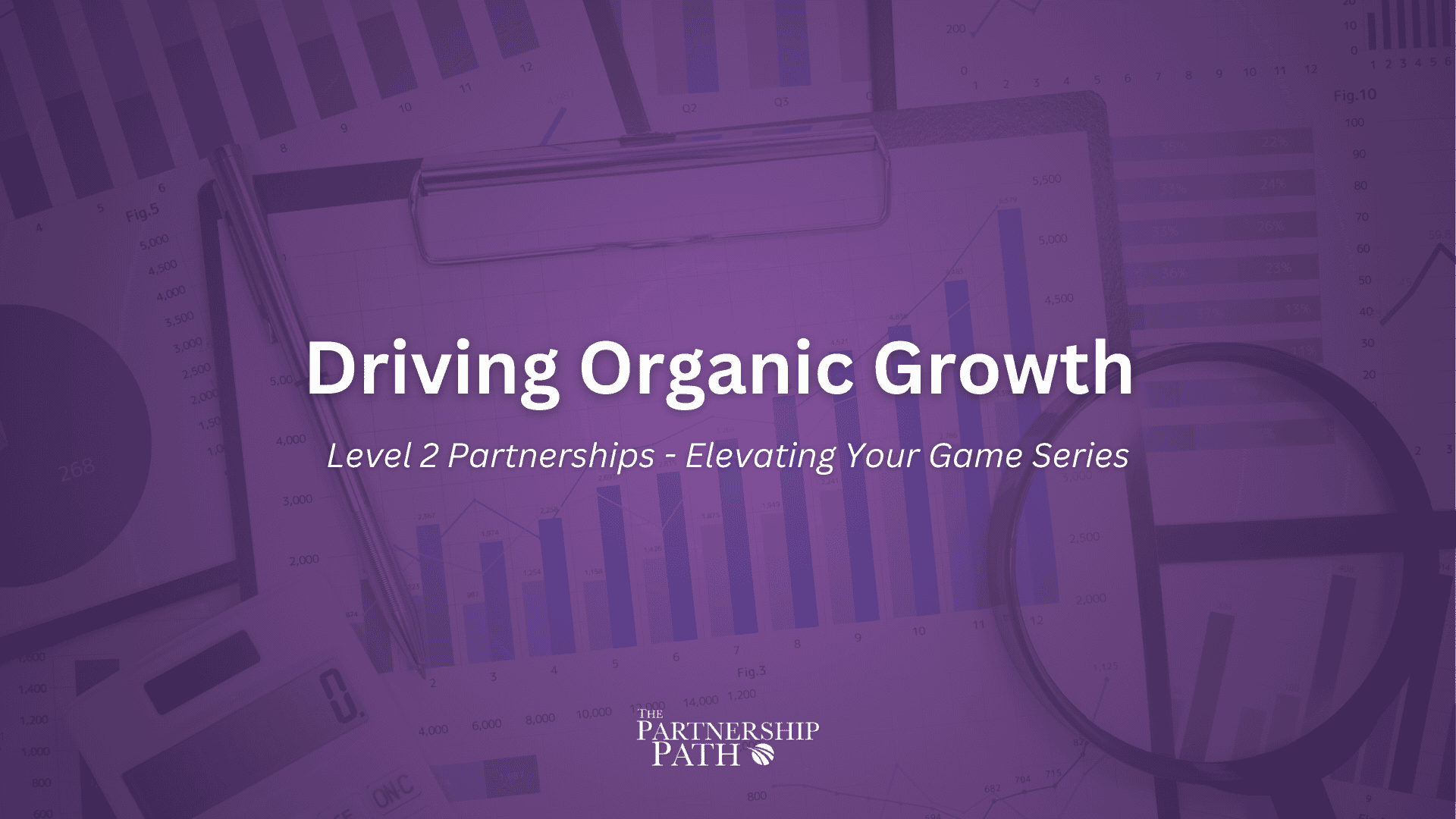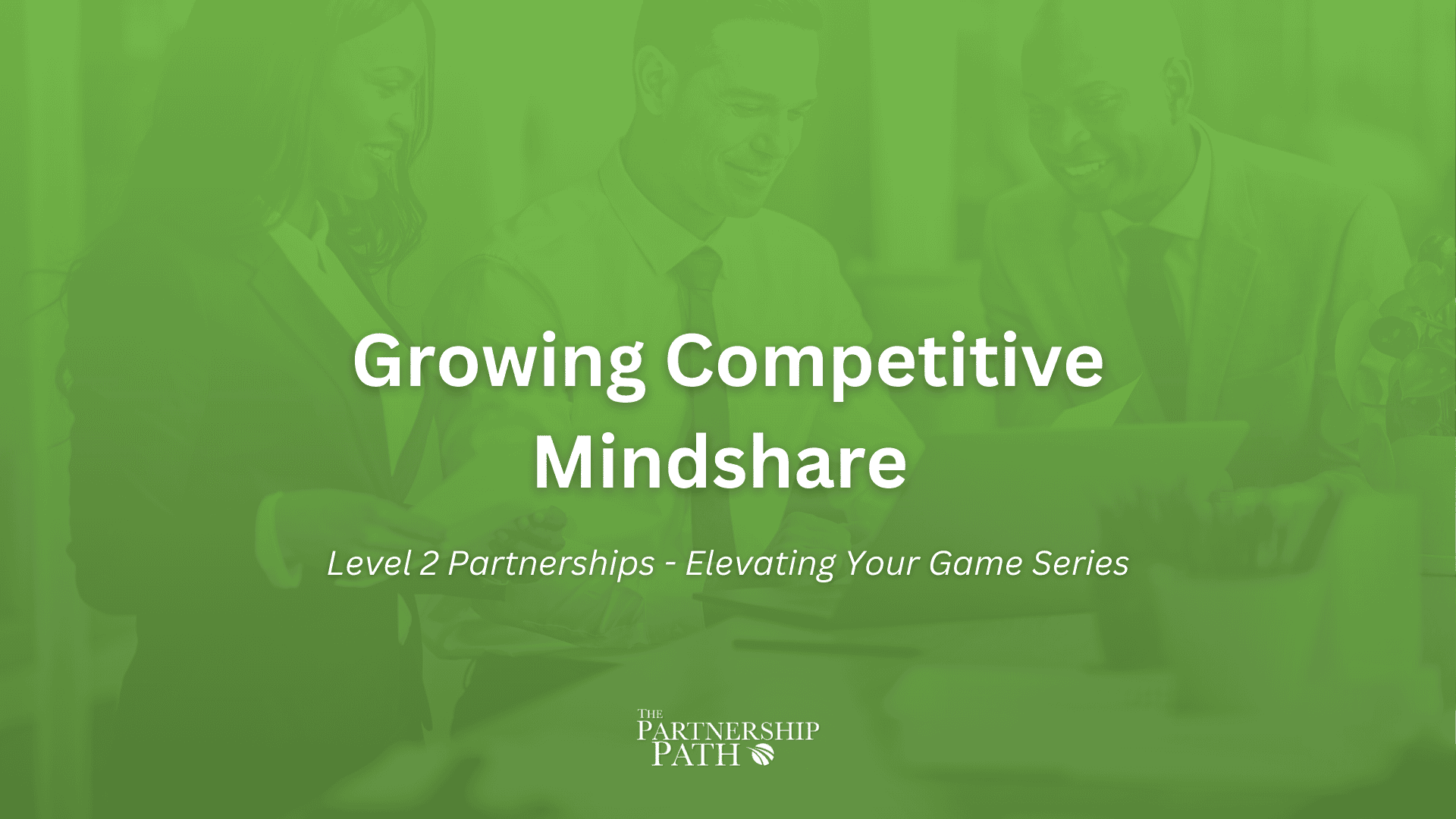Main Episode
Pipeline Reviews With Partners
Episode Summary
In this engaging episode of “The Partnership Path”, John and Toni explore the intricacies of running effective pipeline reviews with partners. The conversation, filled with humor and practical advice, highlights the importance of maintaining a balanced and healthy pipeline. As experts in the field, they share their experiences and best practices, making this episode a must-watch for channel managers and partner managers looking to optimize their pipeline management strategies.
Transcript
John: Hello, Toni. Welcome to The Partnership Path. I don’t even know what episode number this is. I’m losing track of the numbers now.
Toni: Hi, John.
Toni: I don’t know. And at some point I’ll stop talking over you when you do the introduction. But for now, you know, I’m still learning, still learning.
John: We don’t really have a… maybe we should be scripting this. Should we be better at deciding who’s going to talk when, when we first get together? It’s hard. I’m not sure everyone knows this either, that you’re all the way in the UK and I’m all the way in Los Angeles. So we’re a long way apart from each other.
Toni: We are, we are. I do quite like watching when you’ve got, you know, people presenting the news or a current affairs show, and if I were doing that, I’d be going, “Hello, welcome to the partnership podcast with John Rudo.” And then you’d say my name. People don’t introduce themselves. It’s odd. So anyway.
John: Yeah. Yeah, why is that? Should I start doing that? Are we messing up?
Toni: I don’t know. We’re never getting our own television show. That’s what it comes down to, John.
John: Yeah, well, I’ve already had my 15 seconds of fame. It’s all over for me. Ally McBeal, that is correct. We don’t need to go into that too detailed, but for those of you listening, yeah, Ally McBeal. Hey, I had a question for you as we were starting today because I’m… do you ever get…
Toni: Yeah, Ally McBeal.
John: How do I want to say this? Because I think this is relevant to our listening community, which is I’m having one of those days where my clients and my partners are kind of getting me down. Like, you know, like I know that sounds terrible, but there’s just sort of some things that are happening that I’m just like, oh, really? And it’s really hard sometimes to get over that, to focus on what’s right in front of you.
Toni: Oh yeah, I mean, I could tell you a story about one of those if you like. Yeah, I won’t name the partners. This was when I used to run a TelePAM team, so Telephone Partner Account Managers, and they had to manage thousands of partners between them. And there was one in particular who used to phone and phone and phone. And my team member came to me and said, look, this is not their…
John: Well, sure, bring it on.
Toni: …demanding to come in and I’ve tried to explain that they’re tele-managed, but they came in, I spoke with them for half an hour. So we had a meeting. And then there was a Steve Ballmer event in the UK and this partner came and stood up and asked a question. You know, it was one of those where you just go, oh my goodness. So they, I mean, it was, you know, when someone says who?
John: Oh no.
Toni: …let that person in. It was just the worst and that was when it felt like every day we were having a bad day because this, you know, they were very good at making sure they got heard by everybody. But it was like, could I take a step back and go, okay, this is one very big, very painful thing, but what else can I see?
John: Yeah, how do I shift my focus to something that’s more positive and also realize that in the moment that feels way bigger than it really is, right? I mean, that’s my trick is to always be like, okay, I know this is getting me down, but I know in a week I’ll look back and this won’t be as big of a deal as it seems like it is today. So I should kind of smooth over. Anyway, I don’t know. That was just where my head was at when we got on today.
Toni: Yeah.
John: Has nothing to do with our topic. We should actually get to our topic, which is about running pipeline reviews with partners. This actually came from our community. They wanted to hear a little bit about kind of the right way to run pipelines with partners and what are some best practices there. So we’re going to do that’s what we’re going to talk about. Yeah. All right. Yeah. So how do you want to start that?
Toni: That’s what we’re gonna do. Give them what they asked for. Come on, John. Well, I think if I think of pipeline, I think of a collection of deals, but we’ve talked about deals. So I’d like to hear your definition of what pipeline is.
John: Yeah, I think people use the word pipeline to mean a lot of different things. And I think in particular in the channel, we hear people use the word pipeline and what they really mean when they say, well, I’m going to meet with a partner and talk about pipeline is they’re going to go talk deal by deal by deal, which is really about the episode we did last time, which was really about, you know, how do I talk to a partner about a particular deal and maybe help them move that deal forward?
Toni: Yeah.
John: I think what we want to try and focus on when we use the word pipeline is more of a macro perspective. Meaning that our pipeline discussions are really more about how do we look at the collection of deals that we have and look at some trends that help us decide are we on the path to success?
Toni: Yeah.
John: Or do we need to make some adjustments, right? So that means looking at things like, do we have enough? Is our pipeline full enough? Is it balanced? Meaning, is there enough in like the different stages of the sales cycle that’ll produce kind of an even revenue stream as opposed to a roller coaster of revenue? Is it moving fast enough? Like are deals progressing at what we would expect?
Toni: Yeah.
John: …to be a normal pace and where are their execution issues? So like where are their common stalls or common bumps in the road, not deal by deal, but across many deals so we can go, huh, there’s something wrong here. The way the partnership is positioning the contract or talking about pricing or…
Toni: Yeah.
John: …positioning our competitive advantage or something’s happening in a particular spot that’s creating pipeline issues. That’s what I think pipeline discussions should be about. That’s not easy to do, but it’s not about deals. It’s about a collection of deals. I don’t know.
Toni: Yeah, so if you looked at the attributes of what, and I guess you kind of touched on it, of what a healthy pipeline would look like, it would be, as you say, so distribution of opportunities, waiting, time to mature. So have you got some set kind of categories in mind when you’re thinking about how a pipeline review would work? What would that be broken down into?
John: Yeah, I do. I think it’s actually formalizing. So actually, let me say it this way. I think the categories are driven by how sophisticated the two partners can be in terms of creating a macro pipeline perspective. The easiest one to track is volume. Do we have enough?
Toni: Yeah.
John: Right, to be able to look at everything that’s in the pipeline for the partnership, compare that to the goal that we have, assume some sort of reasonable win rate and say, is there enough? Like, are we going to make the number or do we need to get more into the pipeline? Right. I think that is a relatively simple calculation, all that. You could even do that by hand by looking at…
Toni: Yeah.
John: …the part what the partner has in their pipeline versus what you have in your pipeline and combining and doing some of that kind of stuff.
Toni: Yeah.
John: It gets more complicated as you move to the next category, which I think is what I call balance. I think you called it distribution. Doesn’t matter what you call it, but the idea being if we have enough in the pipeline, is it spread out, right? Or is everything in the pipeline at the very beginning of the funnel, or is it all at the very end of the funnel or whatever, right? And, you know, obviously your goal is to have a…
Toni: Yeah.
John: …relatively even is not quite the right word because, you know, we call it a funnel because it’s bigger at the top than the bottom, right? So we want more at the beginning and because we know some things are gonna fall out along the way and so, but you want to have a relatively even distribution based on some norms, right? That’s a little bit harder to do in partnerships because the way you track pipeline, your sales phases and stages…
Toni: Yeah.
John: …are different than the partners. And so there has to be either a common pipeline or you have to do some translation work to get to that, to be able to see that. Now there’s lots of systems out there that do that, right? We have partner PSM systems, we have partner marketing systems that collect that.
Toni: Yeah.
John: I know like Microsoft used to make partners register their deals and so then they would actually go into the Microsoft pipeline so that you had visibility into that. That kind of depends on how much power you have as the vendor, right? Whether you can really make that happen. And of course, then there’s the question of how real is that, right? Are partners really going to tell you everything that’s in their pipeline? And if they are, how honest are they being about…
Toni: Yeah.
John: …how well those are progressing and what’s really there, right? So that becomes a lot of relationships. And that is, by the way, that I think that’s why we get back to, you know, I think the idea is let’s sit down and talk about the pipeline, the pipeline’s about deals because it does become…
Toni: Yeah.
John: …like, if I really want to get to this sort of distribution or balance question, that means I really need to know the deals that are in there and where they are so I can really start to work that. So, I think that’s kind of the second category. The third category for me is kind of what I would call like health or execution. And that is, you know, is there some common patterns where things are falling out, right?
Toni: Yeah.
John: Like, do we see that, hey, all the stuff that’s in stage three is just stalling, right? So we’ve got good volume, we’ve got good distribution, but everything’s getting stuck in stage three. Or everything’s getting stuck in stage five or whatever. And so that is a harder one to get your arms around because the partners tend to like to work on their own timeframes.
Toni: Yeah.
John: And so they don’t always know, you know, they may not be tracking stages the same way we do. And so that becomes harder. But you can see if you start to see some commonalities, like, you know, we have a partner, we do pipeline reviews with them and it seems like, you know, every time we talk to them, they have a lot of stuff that, you know, it seems to fall apart when legal gets involved.
Toni: Yeah.
John: You know, they can’t get their contracts through their legal department or it seems like, you know, we keep losing on price at the end. So they get to the point where they show pricing and then they lose the deals and things like that. So those are the kinds of things I think you want to look at. But that’s more anecdotal. And that’s a harder one to get to. So those are kind of the three categories. Volume, distribution or balance, and health or execution.
Toni: Yeah.
John: And those are the three things I would look at. And then the last one, which I think is the hardest to measure is what I call velocity. Which is basically how fast are deals moving through the pipeline. And that’s tricky because it can be very different for different types of deals, different partners, different market segments, etc.
Toni: Yeah, and I guess you could have a situation where you’ve got lots and lots of volume and it’s balanced, but actually if it’s really slow, if the velocity isn’t there, then that’s going to create issues down the line, isn’t it?
John: Absolutely. I think velocity is the one that really can sneak up on you because, to your point, you can have lots of stuff in the pipeline, it can be really balanced, but if everything’s just crawling, you’re never going to hit your number because nothing’s coming out the other end, right? And that’s where you have to really start digging into why. And that’s where, you know, maybe it gets back to our earlier point, maybe there’s a partner…
John: …issue, right? Maybe they don’t have the right incentives, maybe they don’t have the right training, maybe there’s a competitor that’s doing something that’s really stalling deals out, maybe there’s something in our process, you know, our contracts take too long, or the way we do our pricing is too complicated, or whatever. That’s where you have to really dig in and understand why things aren’t moving as fast as they should be.
Toni: Yeah, and I suppose the trick is getting the partner to see that it’s in their interest to address those issues as well. Because if they’re going to be more successful, then they’re going to do more business with you. It’s not just about hitting your number, it’s about helping them hit their number too, right?
John: Absolutely. And I think that’s why having these kinds of pipeline reviews and really focusing on the bigger picture is so important because it’s easy to get bogged down in the details of individual deals and miss the broader trends. But if we can help the partner see those trends and understand how addressing them will help them be more successful, then we’ve got a much better chance of making progress.
Toni: Yeah, that makes a lot of sense. And I think, you know, from the partner’s perspective, if they can see that you’re invested in their success and you’re willing to help them address these issues, then they’re going to be more willing to share that information with you and work with you to solve those problems.
John: Exactly. It’s all about building that trust and showing that we’re in this together. And I think that’s where the real value of these pipeline reviews comes in. It’s not just about checking a box or going through the motions, it’s about really digging in and understanding what’s happening and working together to make things better.
Toni: Yeah, absolutely. And I think, you know, just to kind of wrap this up, the key takeaway for me is that it’s not just about the numbers, it’s about the relationships and the trust and the collaboration. That’s what makes a successful partnership.
John: Well said, Toni. I couldn’t agree more. So with that, let’s wrap it up for today. Thanks to everyone for listening, and we’ll see you next time on The Partnership Path.
Toni: Thanks, John. Bye everyone!
John: Bye!
Key Takeaways
- Volume, Balance, and Velocity: Understand the three critical aspects of a healthy pipeline and how to manage them effectively.
- Macro Perspective: Learn to shift the focus from individual deals to a broader view of the pipeline to identify trends and potential issues.
- Goal Setting: Incorporate pipeline goals into your overall strategy to ensure you have enough deals moving through the pipeline to meet your targets.




